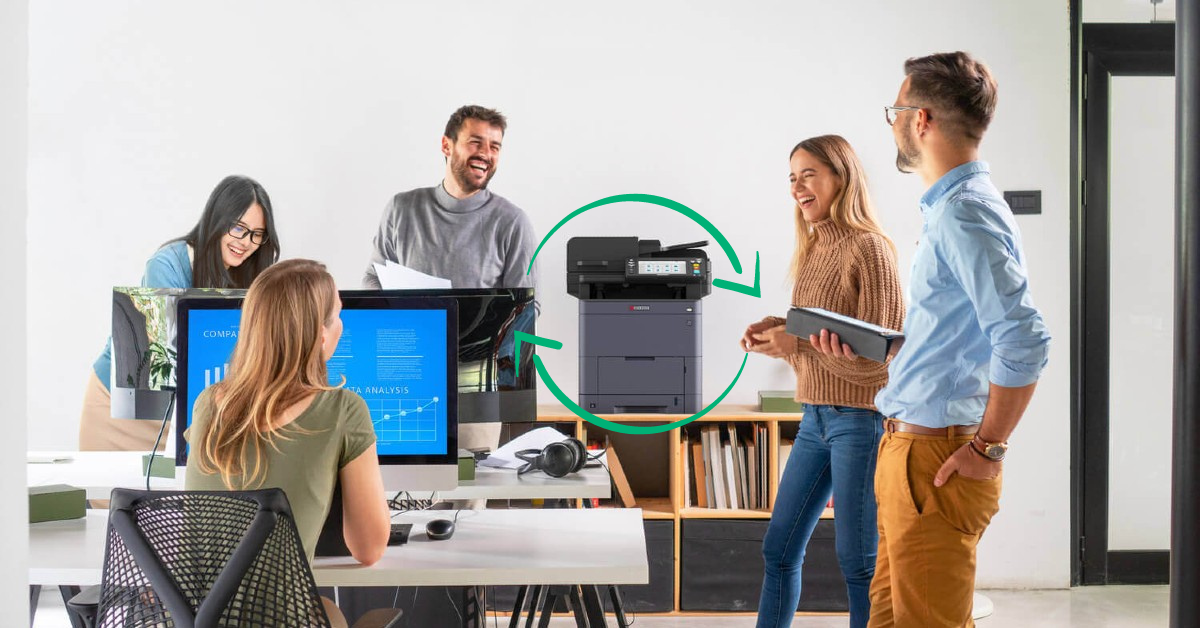Businesses, big and small, can create a more sustainable workplace by reducing their waste and opting for more environmentally friendly office products—and there are plenty of reasons to do so to improve sustainability in the workplace.
The average Australian office uses about 10,000 sheets of A4 paper per year, of which half will end up in landfill. Additionally, the ever-increasing amount of e-waste sees over 17 million electronic devices disposed of each year, with only 4 per cent being recycled.
But it's not just the tonnes of waste that should be of concern to businesses; commercial buildings account for 10 percent of Australia’s total energy consumption, with offices responsible for one quarter of that figure, approximately 5.74 billion kWh per year.
Evidently, there is work to be done by Australian businesses to improve sustainability in the workplace and their environmental practices. And aside from the obvious benefits for the earth and our climate, going green has some pretty impressive perks for companies, including:
- A better business reputation
- Resource recovery
- Cost savings
- Improved staff morale
While a company-wide sustainability culture shift may or may not be on the agenda at your workplace, there are several quick 'green' wins which you can start implementing today—and often save money in the process!
Here are our green office ideas for creating a more sustainable workplace today.
1. Opt for better office products
While there may not be the budget to swap out all of your office products for their sustainable equivalents, you can focus on specific areas, such as more efficient printers, to still make an impact. Other ideas include stocking reusable pens and buying environmentally friendly paper (look out for 'chlorine-free' and high amounts of post-consumer recycled content). Encourage your team members to think before they grab supplies and to use up what they already have before replacing it with new items.
2. Eliminate printing waste
Have you ever printed a document only to find that the last page was mostly blank, so it ended up in the rubbish bin? Simply checking your print job before sending it, and encouraging your team members to do the same, can save on piles of wasted paper each year.
There are now also software solutions which will identify these areas of waste in printing for you. Through measurement, monitoring and ongoing management of print activity, a print management software solution can help reduce paper waste with features like routing print jobs to the most appropriate device.
Another great way to decrease paper waste is to implement 'pull printing' where the print job is sent to the print queue and released at the printer only when needed. This reduces the quantity of forgotten documents sitting in a tray by the printer.
3. Add greenery and boost air quality
Quite literally add more green to your office with indoor plants. Plants both absorb pollutants and release oxygen back into the air—a win-win for your office.
4. Cut down on paper
Reducing paper use can be tackled in a few different ways. One is a company culture shift to a paper-free mindset, where employees start thinking about alternatives to printing before automatically hitting print. Some examples include:
- Putting meeting agendas in presentations instead of printing them.
- Making policy and guidance documents available to new employees on the company intranet instead of with hard copies.
- Using workflows to get digital approval on invoices instead of asking for signatures on paper.
To support this culture shift, there needs to be the right underlying technology in place, such as a company intranet to store policies on, or an Electronic Content Management solution to set up workflows. Converting your paper records into digital content will also save the piles of paper stacking up in your office.
5. Remote and flexible working
Reducing commuter traffic cuts down on air pollution, water pollution and oil consumption—all good things to reduce in order to improve sustainability in the workplace. By implementing remote working for your team members, not only are the environmental effects of commuting reduced, but many employees will also find they are more productive and can achieve greater work/life balance. Plus there are cost-saving and environmental perks to requiring less office space and utilities.
Remote working doesn't have to be for everyone or all week long. Flexible working schedules and part-time remote working will still make a positive green impact.
6. Think about lighting
Introducing more natural light into your company's workspace is a clever way to save energy. Installing smart power strips and replacing existing light bulbs with LED alternatives will also have an impact.
A broader initiative may be to install sensors or timers in the office as well. Not only will you be saving energy, but you'll also be making a dent in the electricity bill!
7. Start a recycling program
Starting a corporate recycling program is a smart way to get serious about a sustainable workplace, especially as about 90 per cent of office waste can be recycled, making this the ultimate quick win. Find out more about the benefits of a recycling program for your company, plus how to set one up successfully.
With concerns about the environment growing globally, many organisations are looking for measurable ways to reduce their carbon footprint. Download our guide to learn how you can adopt sustainable business practices in your organisation.





